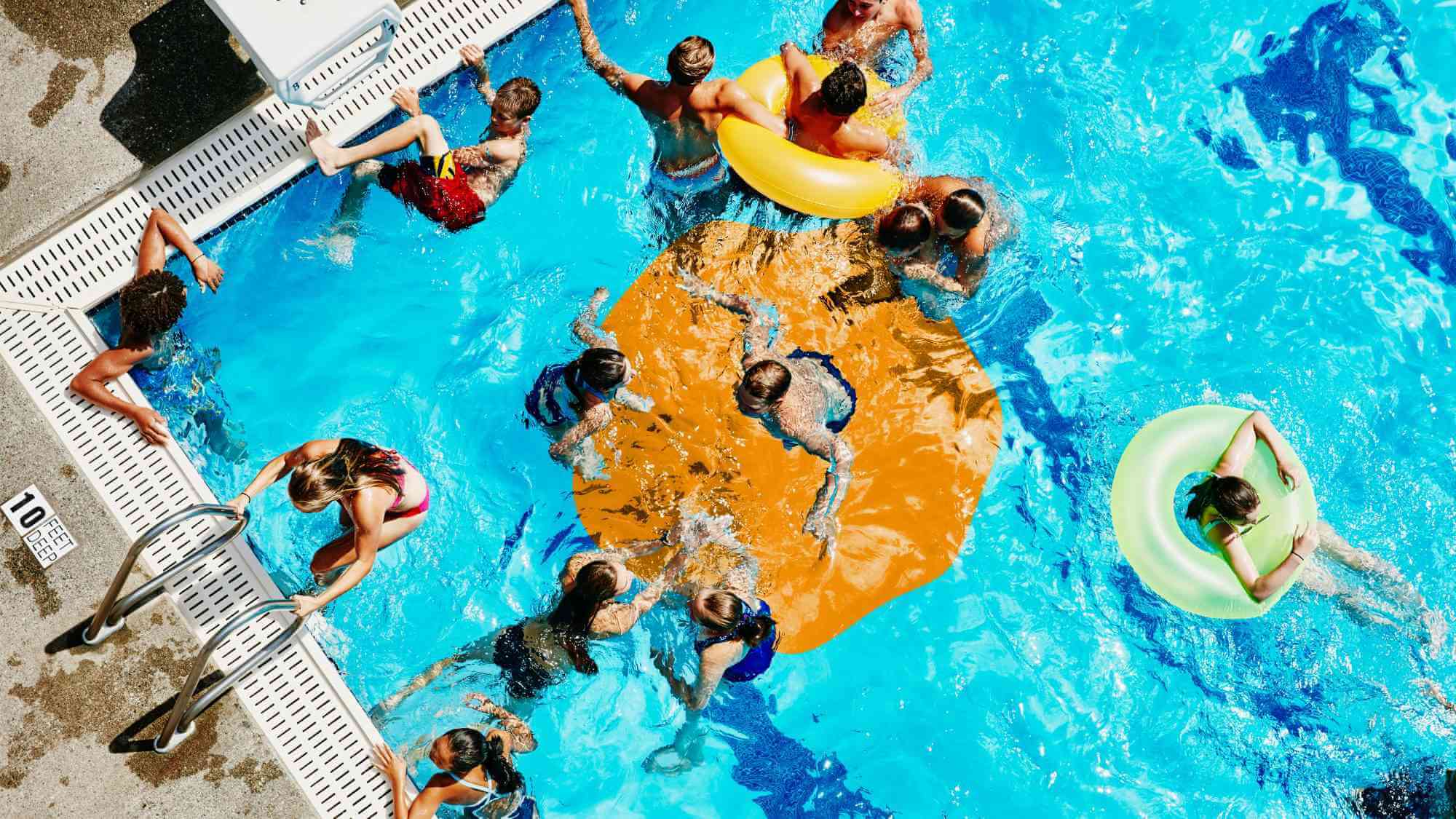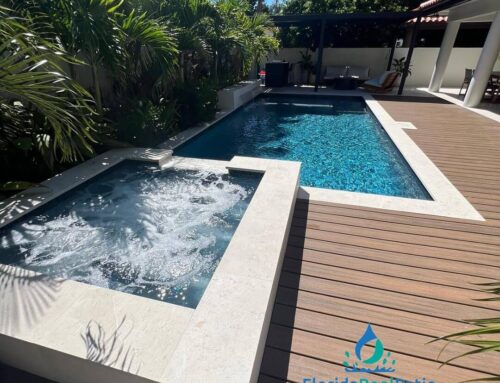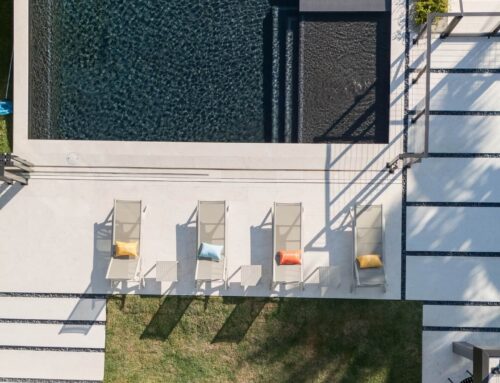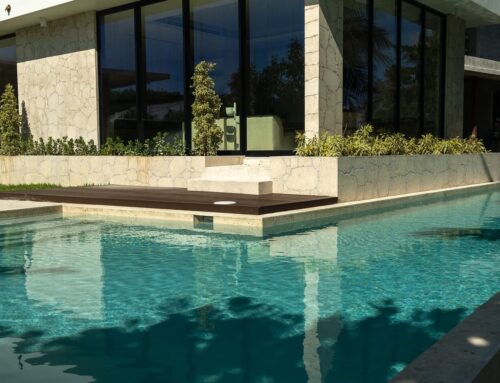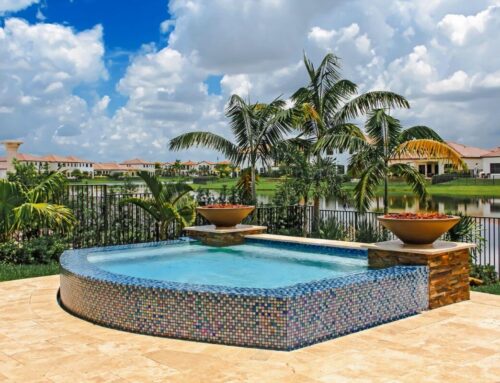When is a pool unsafe to swim in? To ensure a safe swimming pool, it’s essential to keep the pH levels in check. You may need to adjust the temperature of your shower head to maintain a neutral pH level.
Never overlook the significance of maintaining the proper balance between acidity and alkalinity in pool maintenance. Remember to sustain the correct water chemistry to minimize corrosion and other undesirable effects on pool equipment.
Always consult with pool professionals before making any adjustments or conducting maintenance on the water chemistry in your pool.
When Is a Pool Unsafe to Swim In?
It’s crucial to assess the safety of a swimming pool as soon as you encounter it. Be vigilant for signs of unsafe water, such as the presence of algae.
A pool can be hazardous if its water is dirty or cloudy, contains chemicals or contaminants, or has an excessively high pH level.
When Should I Avoid Swimming in My Pool?
Before taking a dip in your pool, it’s essential to consider a few factors. Make sure the weather conditions are safe for swimming. If you have diarrhea, refrain from swimming, and ensure that others do the same until proper cleansing and showering are done.
Even if you’ve cleaned your body, it’s wise to avoid swimming if there is visible dirt on your skin. When entering a pool, exercise common sense precautions. Following these straightforward guidelines will help you enjoy your pool safely during the summer.
Is It Safe to Swim in a Pool With High Chlorine?
When swimming in a pool with elevated chlorine levels, it’s best to avoid touching the water’s surface, particularly in hot weather when chlorine concentrations can be high.
To mitigate the effects of chlorine, thoroughly wash your hands and face before entering the pool. Individuals with asthma should take special precautions when swimming in chlorinated pools, including avoiding the deep end and using air purifiers before diving in.
Pools with a chlorine concentration exceeding 0 ppm (a level considered safe) are typically disinfected every two weeks by introducing ozone gas through the filtration system.
What Temperature Is Safe for Swimming in the Pool?
According to the World Health Organization, a safe swimming temperature falls between 78 and 86 degrees Fahrenheit. If you intend to engage in water activities, it’s advisable to stay within this temperature range and avoid colder or warmer waters.
On hotter days, remember to wear appropriate swim attire and consider bringing water shoes for added comfort. Using a pool thermometer is an excellent way to monitor your pool’s temperature without hassle.
And, of course, don’t forget to apply sunscreen to protect yourself from sunburn throughout the season.
What Happens If You Swim in a Shocked Pool?
Swimming in a shocked pool can lead to skin irritation or eye problems due to the high concentration of chemicals used during the shocking process. When a pool is shocked, it means that a large amount of chlorine or other sanitizing chemicals are added to the water to kill bacteria, algae, or other contaminants. These chemicals are highly concentrated and can cause discomfort or even harm if they come into direct contact with the skin or eyes.
To avoid any risks associated with swimming in a shocked pool, it is crucial to wait until the shock chemicals have fully dissolved and the water has returned to a safe and balanced state. This typically takes a few hours or as recommended by the pool manufacturer or professional. Additionally, it is important to test the water regularly to ensure that the chlorine levels are within the appropriate range before swimming.
What Chlorine Level Is Too High to Swim?
Swimming in excessively high chlorine levels can be dangerous, so it’s crucial to stay within safe limits. You can determine the acceptable chlorine level by consulting your local water quality and health website.
In cases where chlorine levels are elevated, it’s best to avoid swimming. However, if accidental exposure occurs, take steps to safely and promptly address the situation. Regularly checking the website of the Water Quality and Health Council can help you stay informed about any changes.
Can You Swim in a Pool With 5 PPM Chlorine?
Yes, it is safe to swim in a pool with 5 ppm of chlorine. Swimming pools typically maintain a free chlorine level between 2 and 4 ppm, with a range of 1 to 5 ppm considered acceptable. While 9 ppm is on the higher side, it is still considered safe for swimming. The ideal chlorine level for a pool is 5 ppm, but various factors, such as maintenance or ease of testing, can lead to fluctuations.
It’s essential to be aware of the conditions at your local pool, as low chlorine levels can result in skin irritation and eye problems. Before entering any body of water, consult with the lifeguard or aquatic center in your area.
Can You Swim in 17 Degree Water?
Swimming in water below 17 degrees Fahrenheit during the summer can be safe, but it’s crucial to consider the conditions. Colder water may provide increased insulation for your body.
When swimming, be cautious of significant waves and currents. If you plan to visit the pool during peak hours (between 10 am and 2 pm), bring sunscreen and ample water. Keep in mind that swimsuits are not designed to protect against cold water temperatures.
Pool Safety FAQs
What’s the coldest temperature of water you can swim in?
The safe swimming temperature for cold water cannot be pinpointed precisely, as it varies depending on factors like the outdoor temperature and location. If you live in an urban or suburban area, it’s advisable to avoid swimming during foggy or rainy conditions.
At what temperature does chlorine cease to work?
Chlorine production by your Pentair Intellichlor system will stop when the water temperature falls below 52 degrees Fahrenheit.
What’s the most common pool safety issue you encounter?
Always prioritize pool safety and follow essential guidelines while swimming. The most common pool safety concern is drowning. To prevent this, adhere to straightforward safety practices.
What is the most important rule for safe swimming?
Never swim alone. Reiterate, Never swim alone.
Can you swim in a swimming pool that has algae?
Swimming in a pool that has algae is not recommended.
Can you swim in a pool that has a high level of alkalinity without risk?
Swimming in a pool with high alkalinity can be safe if you maintain a balanced pH and adequate chlorine levels.
Is it possible to swim in a pool with high hardness?
Swimming in a pool with high hardness depends on the specific mineral levels, such as calcium and magnesium. Calcium, in particular, can be problematic if it’s overly concentrated. Ensure that your pool water maintains a balanced level of calcium and magnesium before entering.
Can you swim in a low-chlorine pool?
If you feel confident and safe, you can swim in a pool with low chlorine levels.
After shocking a swimming pool, how long should you wait before reentering?
After using a shock containing chlorine, it’s advisable to wait a minimum of eight hours, or up to twenty-four hours, before swimming. Additionally, retest your water to ensure that your chemical levels fall within the recommended range. You can safely swim if your pH level is below 7.6 and your free chlorine levels are below 5 ppm.
Conclusion – When Is a Pool Unsafe to Swim In?
Knowing when a pool is unsafe to swim in is crucial for the safety and well-being of swimmers. Various factors can make a pool hazardous, including inadequate maintenance, improper water chemistry, or mechanical failures. It is important to regularly monitor and maintain the pool’s condition to ensure a safe swimming environment. If any signs of potential hazards or issues arise, it is best to address them promptly and seek professional assistance to rectify the situation.
When it comes to creating a safe and enjoyable pool experience, trust the experts at Florida Pool Patio. With our years of experience in pool construction, maintenance, and repair, we are committed to providing top-quality service and ensuring your pool is always safe to swim in. Contact us today for all your pool needs and let us help you create the perfect pool oasis for your home.
Services We Offer:

